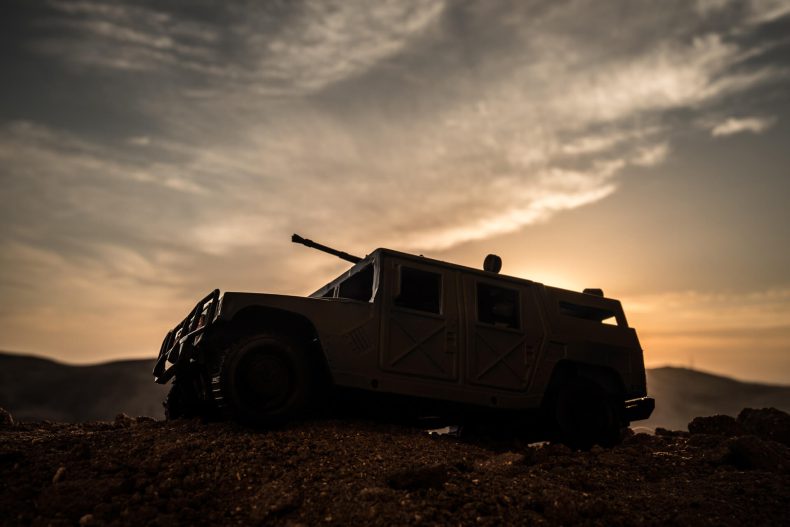Mobius Protection Systems appoints a new agent in Italy
Blog

STANAG 4569: Ensuring Adequate Ballistic and Blast Resistant Protection
Short for Standardization Agreement, STANAG 4569 refers to the standards for the “Protection Levels for Occupants of Logistic and Light Armored Vehicles.” Covering strikes from artillery, kinetic energy, and IEDs, a.k.a. improvised explosive device blasts, it is a NATO (North Atlantic Treaty Organization) standardization agreement designed to ensure adequate ballistic and blast resistant protection from threats. With many different vehicles, armor types, and battlefield threats in existence, agreements such as this are intended to set a gold standard when it comes to the safety and security of troops and the military vehicles they utilize.
The original STANAG 4569 specification was created more than twenty years ago in May 1999. It included five increasing levels of magnitude in terms of ballistic protection. These specifications were revised five years later in 2005 to also include fragmentation, grenade, and mine blast threats. This was to reflect the changing face of modern war zones in the age of asymmetric warfare strategies such as the widespread deployment of IEDs in places like Iraq and Afghanistan.
STANAG 4569 is just one of hundreds of standardizations (others cover everything from small arms ammunition and map markings to the way that bridges are classified) that exist to unify standards among NATO countries. The international NATO alliance comprises 30 member states including North America and Europe. Other countries outside NATO may also wish to conform to STANAG 4569 specifications if they either wish to sell vehicles to NATO countries or ensure that they are protecting their troops to the highest recognized international standard.
There are six standardized levels to STANAG 4569 specification reflecting the differing threat levels that NATO light armored vehicles face. Each refers to a different gradation of protection required, covering kinetic energy attacks, artillery attacks, and grenade and mine blast threats. Protection against all three threats must be provided. A kinetic energy attack refers to attacks such as machine gun, rifle and sniper fire. Artillery attacks, meanwhile, are high explosive attacks from heavy military ranged weapons. Finally, grenade and mine blast threats refer to another type of explosive attack on troops, increasingly by using IEDs which may explode when driven over or remotely controlled to explode.
As a leading manufacturer of armored vehicle protection systems, Mobius has worked hard to ensure that we adhere to the standards set out by STANAG 4569. Through thousands of engineering hours and hundreds of tests over the space of a decade, we are supremely confident that our blast-protecting seat systems offer the best possible protection for the troops who willingly risk their lives to protect their countries. Specifically, they comply with the highest protection levels of parts 4A and 4B of the STANAG 4569 specification. These refer to mine explosion pressure activated under a vehicle’s wheels or track location, along with a mine explosion under the vehicle’s center. In all cases, Mobius’ solutions don’t just measure up to what is expected of them; they exceed expectations.
Mobius’ blast-protecting seats have become a standard part of modern Light Armored Vehicles. Such energy absorbing systems are rapidly becoming the norm for armored vehicles as a result. Our lifesaving seating solutions are designed to fit all crew positions, including commander, gunner, driver and troop seats. The seats protect troops in combat environments by shielding the crew members from the devastating impact of IED blasts or other underbody explosions.
We do this using our patented SPIRAL technology to give the seats a small, but crucially efficient energy-absorption element to help reduce exceptionally high energy levels. Incorporating the innovative SPIRAL technology, our highly ergonomic seating solutions isolate crew members from the vehicle’s body. They are able to survive multi-hit assaults and drastic structural deformations, without compromising on performance. With a record like that, it’s no wonder that upwards of 15,000 units of our seats have been deployed on more than 40 vehicular platforms in 23 countries around the world.
Our versatile seating solution can be retrofitted into a wide variety of vehicles, making the utmost use of available space and providing maximum protection to all personnel from the lightest 5th percentile female through to heavy 95th percentile males. SPIRAL technology allows us to optimize our design to take into account different seating parameters like dynamic mass, occupant weight, threat level, and physical features of the vehicle. While this piece focuses on their usefulness within Light Armored Vehicles, they have also been used for a variety of vehicle classifications including Main Battle Tanks, Armored Personnel Carriers, and more.
With an ever-increasing range of threats to keep track of, STANAG 4569 offers a way to comprehensively compare available options and ensure that any decision that you make about protecting your troops matches up to the highest possible standards. Mobius has always aimed to measure to and exceed whatever standards are set for us. When it comes to STANAG 4569, we’re proud to do exactly that.
Please contact us if you have any questions about our troop seats and the thoughts and considerations we have taken in order to ensure that troops risking their lives have the best possible protection. We have a team of seasoned experts on hand who are ready and waiting to answer any and all of your questions.